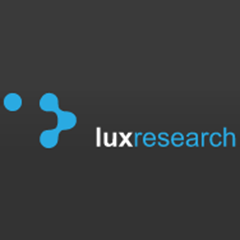The emerging technology reaches 21% efficiency in the lab, leading to deal-making between companies and academic institutions driving research, Lux Research says
BOSTON, MA – April 12, 2016 – Perovskite solar cells are hailed as the next generation of photovoltaic material, and are hoping to drive adoption in new applications. While there are challenges to overcome, perovskites offer several new opportunities for partnerships with universities ahead of a likely commercial deployment between 2019 and 2021, according to Lux Research.
The diverse compounds have seen dramatic achievements in academic labs: From a mere 3.8% efficiency, the cells have rapidly risen to a record 21.0%, compared with 21.7% for competing copper indium gallium dieselenide (CIGS) solar cells, which have been in development for decades.
“While the efficiency question has been answered, there remain issues in stability, cost, and the feasibility of real-world efficiencies that must be addressed before commercialization can occur,” said Tyler Ogden, Lux Research Associate and lead author of the report titled, “The Rise of Perovskites: Identifying the Best Academic Partners to Work With.”
“Still, demonstration of their potential for high performance by academic labs has caused research groups to consider spinning off start-ups, meaning companies need to consider opportunities now,” he added.
Lux Research analysts evaluated the current state of perovskite solar cells and identified opportunities for companies to partner with academia. Among their findings:
Partnerships are emerging from labs. Dyesol has partnered with Michael Grätzel’s lab at EPFL, which achieved the world record efficiency of 21.0% in December 2015. Oxford Photovoltaic is working with Henry Snaith of Oxford University, while Poland’s Saule Technologies has roots from the University of Valencia and Taiwan’s Front Materials from the National Taiwan University.
Opportunities are still available. Many leading researchers have clear partnerships, but opportunities are still present with Nam-gyu Park of Sungkyunkwan University and Yang Yang of University of California Los Angeles. The Weizmann Institute of Science in Israel and Nanyang Technological University in Singapore are also promising developers.
China is top academic publisher. China is the leading publisher on perovskite solar cells, accounting for a quarter of all academic publications, but more impactful research is coming out of Israel, Switzerland, Singapore, and the U.K. China is followed by the U.S. and South Korea. But European countries – England, Italy, Switzerland, Germany, Spain, Sweden, France, Greece and Belgium – together account for 24%, nearly the equivalent of China’s.
The report, titled “The Rise of Perovskites: Identifying the Best Academic Partners to Work With,” is part of the Lux Research Solar Intelligence service.
About Lux Research
Lux Research provides strategic advice and ongoing intelligence for emerging technologies. Leaders in business, finance and government rely on us to help them make informed strategic decisions. Through our unique research approach focused on primary research and our extensive global network, we deliver insight, connections and competitive advantage to our clients. Visit www.luxresearchinc.com for more information.


























